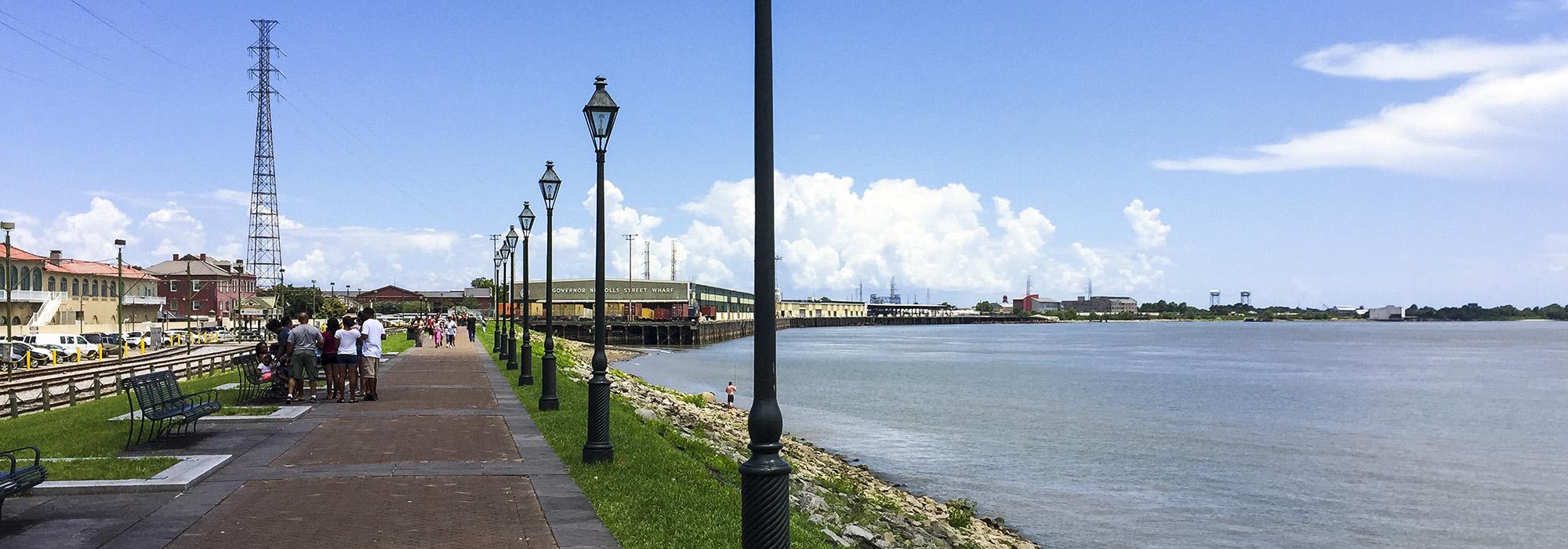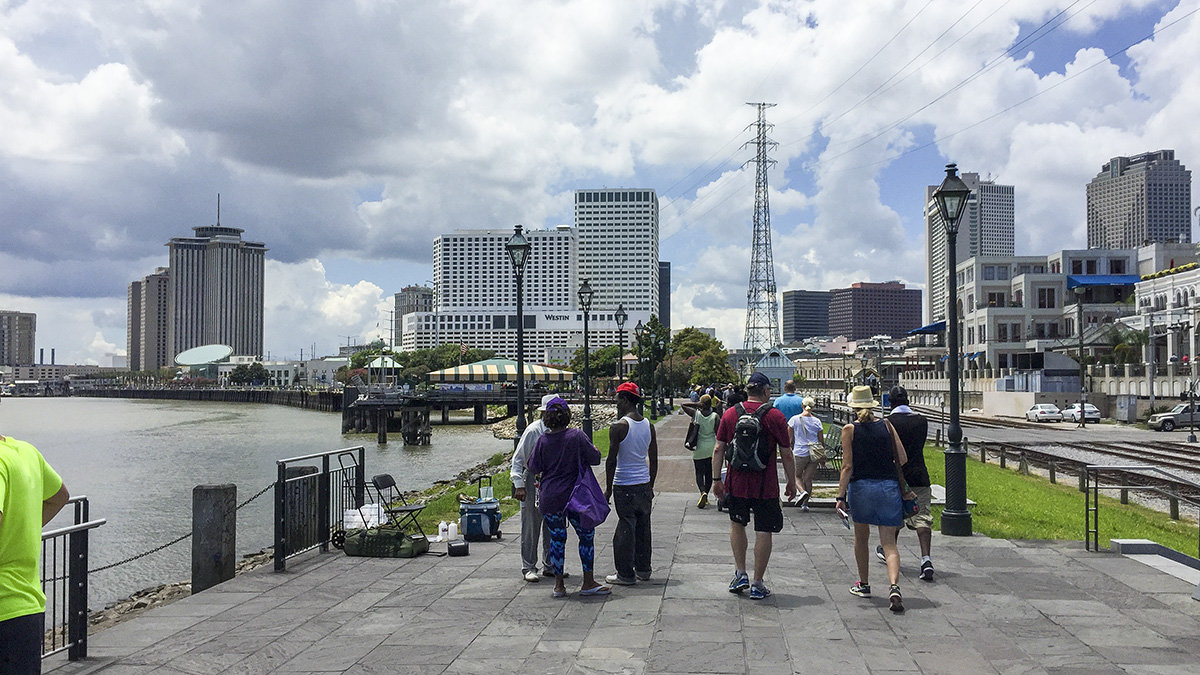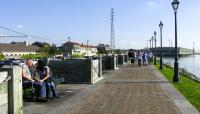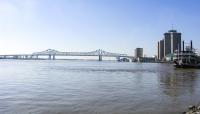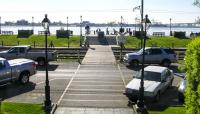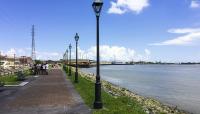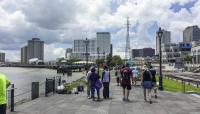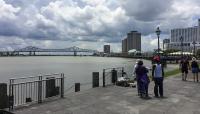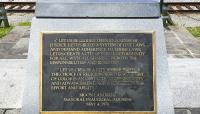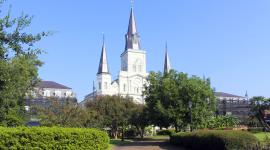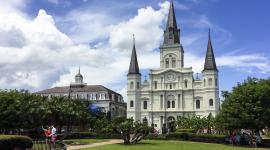Landscape Information
This nearly 3,500-foot-long riverfront promenade located between the Vieux Carré and the Mississippi River extends from the Governor Nicholls Street Wharf upriver to the Aquarium of the Americas in Woldenberg Park. Designed by the landscape architecture firm Cashio Cochran, the Moon Walk was named for Mayor Maurice “Moon” Landrieu. Previously the site of multiple wharves serving the busy shipping lanes along the river, the riverfront was converted to a pedestrian-oriented open space from the mid-1970s to the mid-1990s, beginning with the area now occupied by Woldenberg Park. The Moon Walk was expanded in both directions from its original length, and its original wood planking has been replaced with more permanent materials.
Although it is separated from the city by a concrete flood wall and railroad tracks, the Moon Walk can be accessed via several grade crossings at St. Philip, Dumaine, St. Peter, Toulouse, St. Louis, Conti, and Bienville Streets, as well as from Washington Artillery Park, which links Jackson Square with the promenade. A path leading down from Washington Artillery Park ends at a small stone-paved plaza on the Moon Walk, from which wooden steps lead down to the river. Near the Toulouse Street grade crossing is a dock for the Steamboat Natchez, which provides tours of the river. The red brick promenade is edged and punctuated at intervals by cut stone pavers. Along the walk’s perimeter are black metal lampposts, iron benches, and square planting beds. Tree coverage is sparse, with the highest concentration located in Woldenberg Park. There are several monuments along the walk, including the “Monument to the Immigrants” statue by sculptor Franco Allesandrini, sculptor Robert Schoen’s “Old Man River,” and the Holocaust Memorial by Israeli sculptor Jacob Agam, which was dedicated in 2003.



